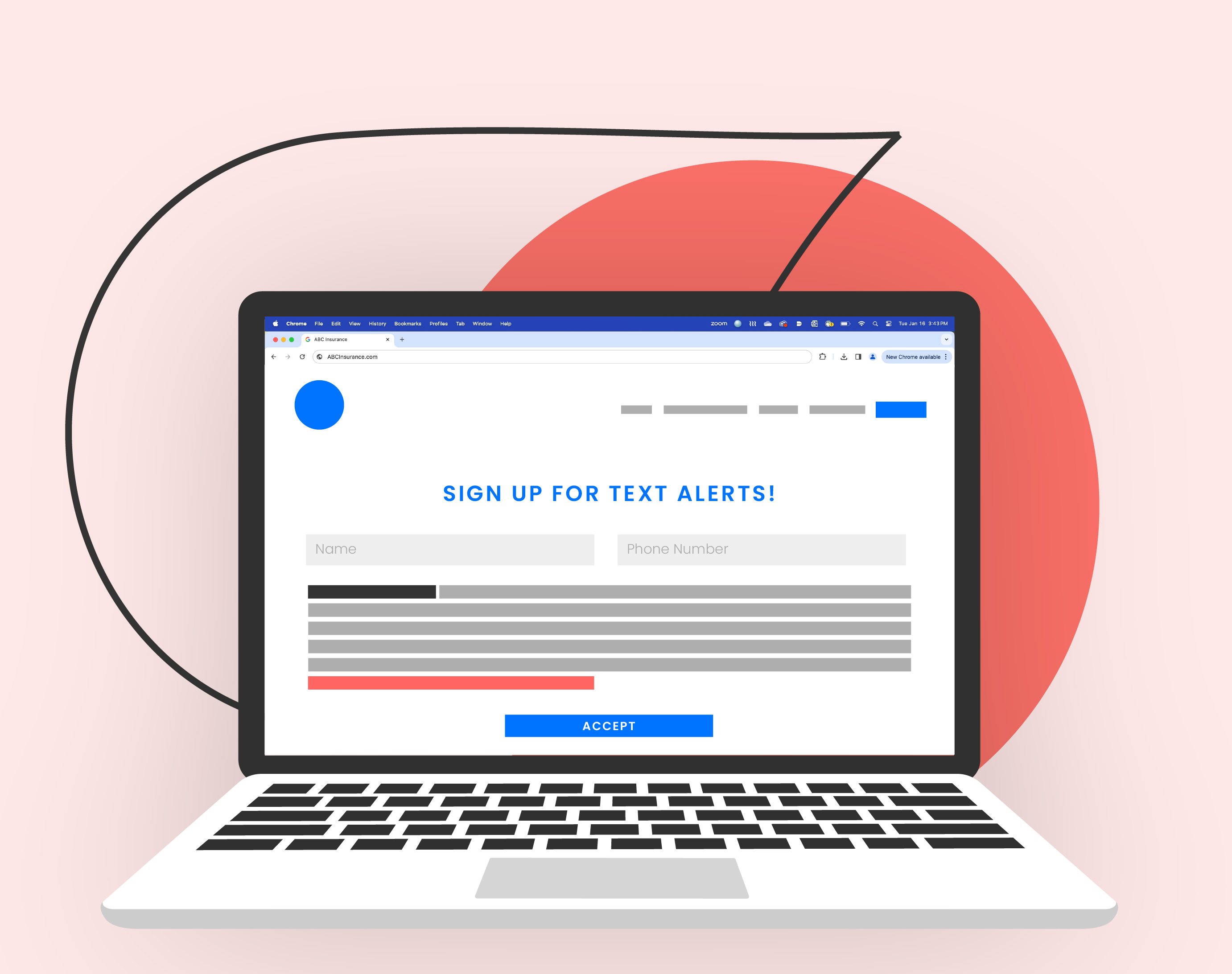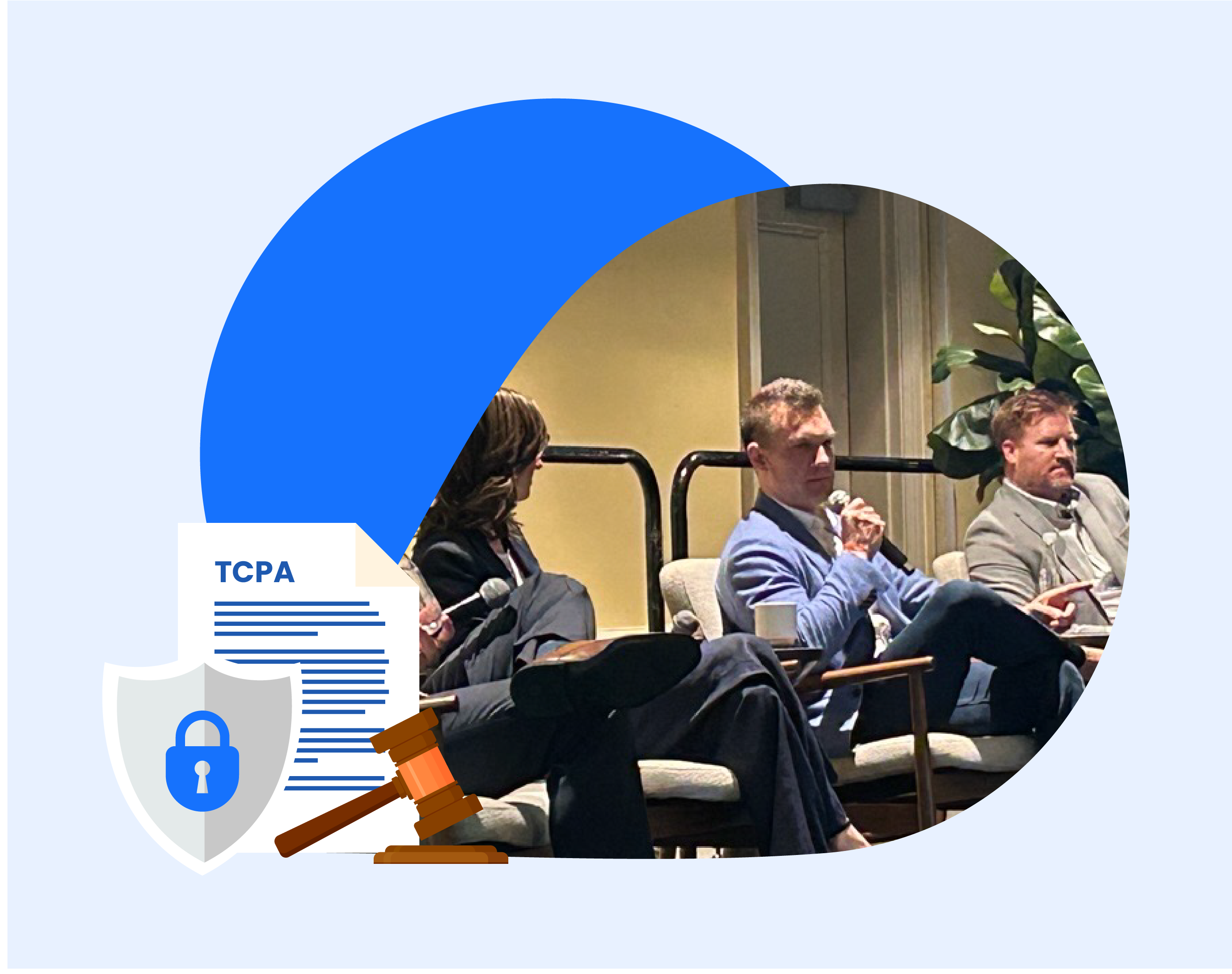The Anatomy of a Disclosure
Updated August 2024
At Drips, one of our guiding principles is “Keep It Safe.” We put compliance first as we help our clients successfully reach their audiences. Part of this compliance work is helping clients follow appropriate disclosure guidelines for the type of outreach they are doing.
Is your audience ready to start receiving SMS from you? The best practice is to gather appropriate consent depending on the type of system and channels you are using. The most complete level of consent is what the TCPA calls “prior express written consent.”
But what makes a good TCPA express written consent disclosure? To craft an effective disclosure, you need to consider both the content AND design.
We’ve written before about the complexities of express written consent as part of a blog series collaboration with our regulatory attorney, Eric Troutman of Troutman Amin, LLP. Fortunately, Eric is also able to shed some light on disclosure guidelines.
“When obtaining proper express written consent both the content of the disclosure and the format of the web page matter. Courts take a holistic view of the consumer’s experience with the website to assess consent — and even well-worded disclosures may be defeated if the consumer’s expectations are defeated by the website’s design.”
Anatomy of a Valid TCPA Express Written Consent Disclosure*
Eric was nice enough to provide us with a sample of what a TCPA-approved written consent disclosure looks like from a content perspective (more on design later).

- Clear articulation of how consent agreement is to be “signed” by the consumer.
- The “seller” must be specifically identified.
- The word “marketing” or “promotion” MUST appear.
- The disclosure should mention texts or SMS if texts will be sent.
- Use of an ATDS MUST be mentioned.
- Use of prerecorded/artificial voices must be mentioned if used.
- The disclosure should limit the scope to the specific subject matter.
- You must state that consent is not required as a condition of obtaining the good or service.
*These are the current requirements for TCPA disclosures. On December 13, 2023, the FCC issued an Order which changes the requirements needed for a valid TCPA disclosure. Starting in January 2025, your disclosure must meet the following requirements:
- Disclosure must reference language on the accept button.
- Disclosure must reference SMS/MMS if those will be used in campaign.
- Disclosure must reference AI generative voice if it will be used in campaign.
- Disclosure must reference marketing.
- Disclosure must be ABOVE the list of companies to be selected and the accept button.
- Disclosure must reference the ESIGN Act.
- Disclosure must advise companies may call on the seller’s behalf.
- Disclosure must reference use of automated technology.
- Disclosure must allow consumer to select good/service providers individually.
- Disclosure must advise consent is not required to obtain any good/service/credit.
- A small “select all” option CAN be provided but must not be forced on consumer.
- Consumer must be able to obtain service without providing consent.
- Disclosure must mention prerecorded or artificial voice messages, if applicable.
- Only a reasonable number of companies should be displayed to consumer.
- Phone number should be supplied on the same page that consent is provided.
Why It’s Essential to Spend Time on Your Disclosures

A concerning trend started to surface in recent years. In numerous court cases, courts refused to enforce online disclosures. The courts are applying a holistic approach, emphasizing whether a consumer is genuinely likely to understand they are accepting terms and conditions when submitting a web form. Here’s how Eric interprets it:
“The court is looking at every element to see if there are affirmative acts of deception or things that distract from a disclosure. If there are confirmations that make it seem like they’re not being informed, the courts won’t enforce it. So, the question you have to ask yourself is: How confident are you that the consumer knew what they were doing when they ‘agreed’ to a disclosure?”
With that in mind, here are some general things to think about when drafting disclosures:
- The disclosure must be close to the acceptance button — while a placement directly above the button is not necessarily required, it is preferred.
- Hyperlinks must be obvious and underlined or capitalized.
- The disclosure must be in readable font — both in terms of size and color against the background.
- The website should not be cluttered or otherwise full of impertinent language in different font sizes and colors that might distract from the disclosure.
- Disclosure should actually and clearly explain that by clicking the button, the customer will be accepting the disclosure.
- The disclosure must be apparent at the time the user clicks the submit button, and it cannot pop up only before or after the button is presented.
Design Matters

Think the text is all that matters in a written consent disclosure? The design plays a huge part in it, too. The court will scrutinize a website to determine if the design reduced the impact or otherwise minimized the disclosure.
Let’s look at common issues and court cases that found the design obscured or problematic.
The Proximity of the Disclosure to the Acceptance Button
- Arnaud v. Doctor’s Assocs., No. 19-3057-cv, 821 F. App’x 54 (2nd Cir. 2020)
- Finding: “Reasonable user would not find the terms and conditions link contained on the page to be conspicuous, since the link was at the bottom of the page, in relatively small font, and was introduced by no language other than the shorthand ‘T & Cs’”.
The Consumer Must Plainly Understand Clicking a Button Is Accepting the Terms
- Berman v. Freedom Fin. Network, Case No. 18-cv-01060-YGR, 2020 U.S. Dist. LEXIS 160406 (N.D. Cal. Sept. 1, 2020)
- Finding: The website layout did not afford conspicuous notice to the consumer because there was no above-the-button language notifying the consumer that they were accepting disclosures by clicking the button.
The Site Must Clearly State That Terms Are Being Accepted
- Soliman v. Subway Franchisee Adver. Fund, No. 3:19-cv-00592 (JAM), 2020 U.S. Dist. LEXIS 38183 (D. Conn. Mar. 5, 2020)
- Finding: The page “actively” took attention away from terms and conditions at the bottom of the page. The page did not specify that the consumer was accepting the hyperlinked terms and conditions.
Cluttered Pages Are a Bad Idea
- Shultz v. Ttac Publ, Case No. 20-cv-04375-HSG, 2020 U.S. Dist. LEXIS 198834 (N.D. Cal. Oct. 26, 2020)
- Finding: The hyperlink was not visible, a distracting video was playing, promotional material was present, and big green checkmarks on the page obscured the importance of the hyperlink.
All enterprises should endeavor to make sure their written consent disclosure will hold up in court before they start texting their audience. It may take some additional time to prepare things, but it’ll probably cost less in the long run compared to the alternative of going to court.
Does keeping up with the complexities of texting regulations feel like a burden? Choosing the right outreach partner can help lighten the load. Drips understands the complexities of SMS marketing and the importance of maintaining compliance. Our team is ready to help you keep it safe while meeting your outreach and engagement goals.
Disclaimer: This article and all information contained in it does not, nor is it intended to, constitute legal advice; instead, all information and content herein is for educational and informational purposes only. Information in this article may not constitute the most up-to-date information, and Drips, the writers of this article, and any contributors or contributing law firms herein disclaim any obligations relating to the timeliness or accuracy of the information contained here. No warranties should be implied. All liability with respect to any actions taken or not based on the contents of this article is expressly disclaimed. Readers should consult with an attorney to obtain advice with respect to any particular legal manner, and no reader should act or refrain from acting on the basis of information on this article without first seeking legal advice from counsel in the relevant jurisdiction.







